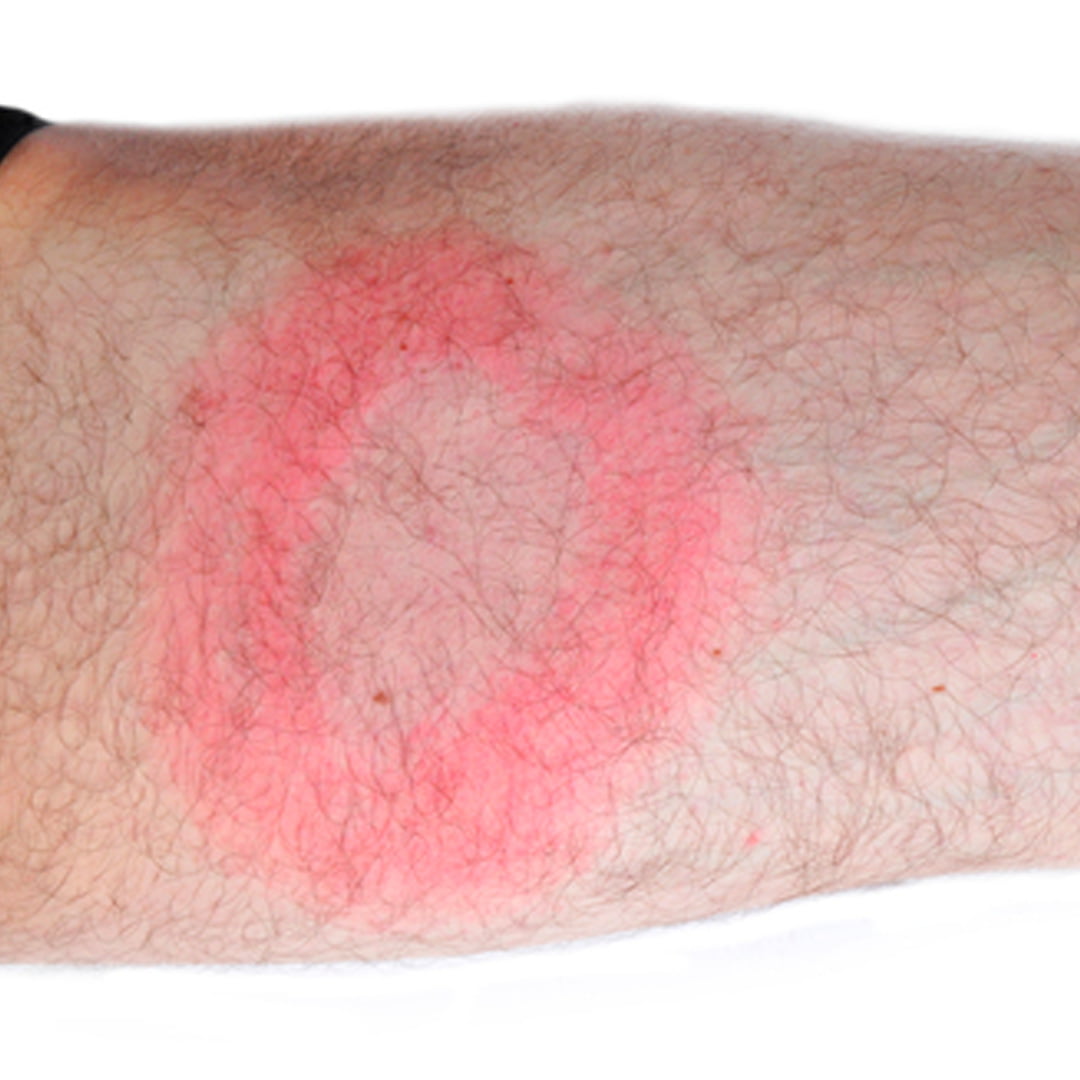Symptoms of Lyme disease
Lyme disease is caused by a tick bite in which the tick is infected with the Borrelia burgdoferi bacteria. If you ignore these first symptoms, a tick bite can lead to Lyme disease, tick disease number one.
Visible symptoms
The red circle around the bite indicates that an infection has occurred. This circle disappears after three months, but the tick may have left the bacteria in the body. Such a red spot is also called erythema migrans and is the only characteristic symptom of Lyme disease.

Palpable symptoms
Symptoms that can be felt include experiencing a headache, developing a fever, a stiff neck, or developing muscle pain. In a later stage, the disease can manifest itself through nerve pain or meningitis. A chronic form of Lyme disease is characterized by inflammation and discoloration of the arms or legs and/or chronic joint inflammation (usually in the knee). Heart problems or nervous system problems can also occur. The time that elapses between infection and the first symptoms (the so-called incubation period) varies from several months to years.
There are people who are infected by the Borrelia burgdoferi bacteria without becoming ill. The Borrelia burgdoferi bacteria mainly causes complaints in the nervous system, in the joints or in the heart. If the disease is not noticed, neurological, joint, skin or heart complaints can occur. Complaints in the nervous system are the most common. For example, paralysis of the facial muscles or pain and loss of strength in an arm or leg. Cardiac arrhythmias or skin
